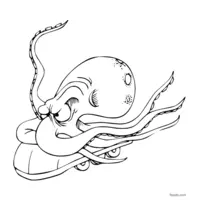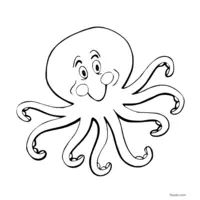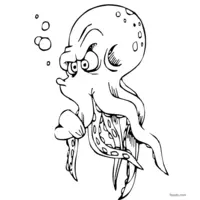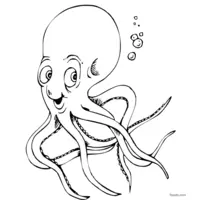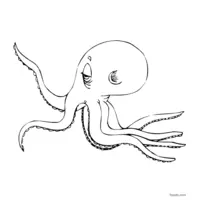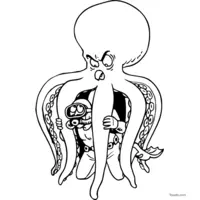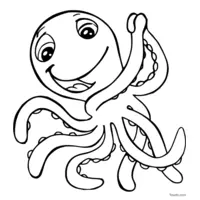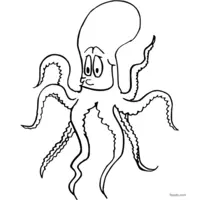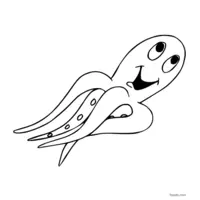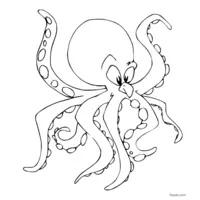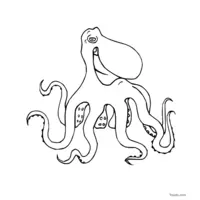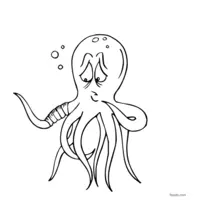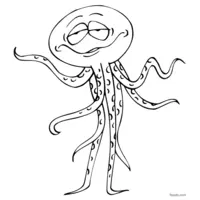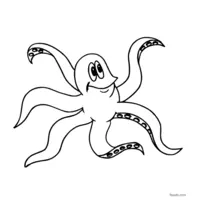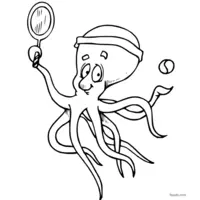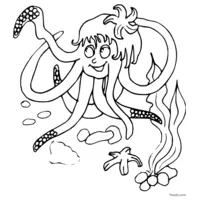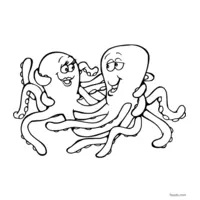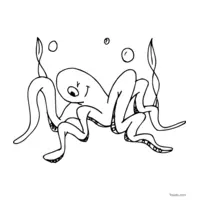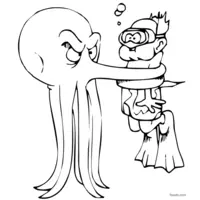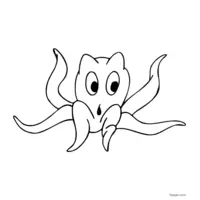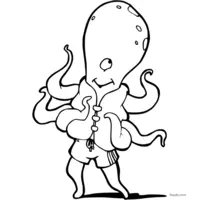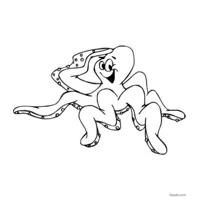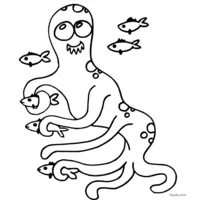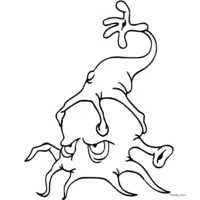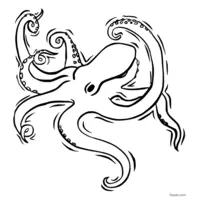Octopus coloring pages to print.
Octopus Coloring: A Formidable Predator
Just like a chameleon, the octopus has the ability to change color to blend into its surroundings, allowing it to escape from predators. This camouflage technique is also used for hunting, making it an excellent stealth predator. Because of this unique ability, you can use virtually any color to bring these octopus coloring pages to life.
The octopus primarily feeds on crustaceans such as crabs, lobsters, and crayfish. It possesses a secret weapon to break down its prey before eating them: a powerful beak that can crush even the toughest shells. If you’re interested in coloring its favorite meals, you can also explore crustaceans and other sea creatures.
In the wild, it’s a game of eat or be eaten. The octopus’ primary predator is the moray eel, but this intelligent cephalopod has ways of defending itself. Did you know that a giant octopus has been observed killing a dogfish shark in an aquarium in Seattle, USA? It’s a true testament to the octopus’ strength and cunning in the underwater world.
Enjoy your octopus coloring and have fun exploring the wonders of the sea!
Octopus Coloring: A Tale of Tentacles
Octopuses are fascinating creatures known for their tentacles, but they’re not the only ones in the animal kingdom with this feature. Let’s explore some other intriguing animals that share this characteristic.
Jellyfish – Jellyfish float gracefully in the ocean, using their tentacles to catch prey. These tentacles contain stinging cells called cnidocytes, which can paralyze their victims. While some jellyfish are harmless, others deliver painful stings to humans.
Sea Anemones – Resembling underwater flowers, sea anemones use their tentacles to capture small fish and crustaceans. Like jellyfish, they also possess cnidocytes that help them subdue their prey.
Squid – Squids, similar to octopuses, are cephalopods but have a more elongated body. They possess eight arms and two long tentacles, which can reach up to 10 meters in length. These tentacles are equipped with suction cups that allow them to grasp prey.
Other Cephalopods – Like octopuses, cuttlefish and nautiluses also use their tentacles for capturing food and defending themselves against predators.
In conclusion, tentacles are not unique to octopuses but are found in many marine creatures. From jellyfish and sea anemones to squids and other cephalopods, these appendages play a crucial role in survival, whether for catching prey or avoiding predators. Some of these creatures can be dangerous, so if you ever encounter them in their natural habitat, it's best to admire them from a safe distance.
🐙 Dive into More Exciting Undersea & Marine Animal Coloring Pages!
If you enjoyed bringing these mesmerizing octopuses to life, you might also love exploring other fascinating sea creatures. Let your imagination swim through coral reefs and deep oceans with these colorful designs!
- 🐬 Dolphin Coloring Pages – Add friendly and intelligent companions to your undersea world.
- 🦈 Shark Coloring Pages – Dive into excitement with the ocean’s top predators.
- 🐠 Fish Coloring Pages – Splash your pages with colorful fish that bring oceans to life.
- 🐚 Seashell Coloring Pages – Enhance your beach scenes with these intricate shell designs.
- 🦀 Crab Coloring Pages – Populate your coastal habitats with these charming crustaceans.
- 🌊 Sea Animals Coloring Book – Immerse yourself in a wide range of marine life for endless coloring fun.
🌟 Print or color online and let your creativity dive deep among octopuses, dolphins, sharks, and more ocean wonders!
Copyright © 2024 - Toupty.com
All rights reserved - Legal Notice









